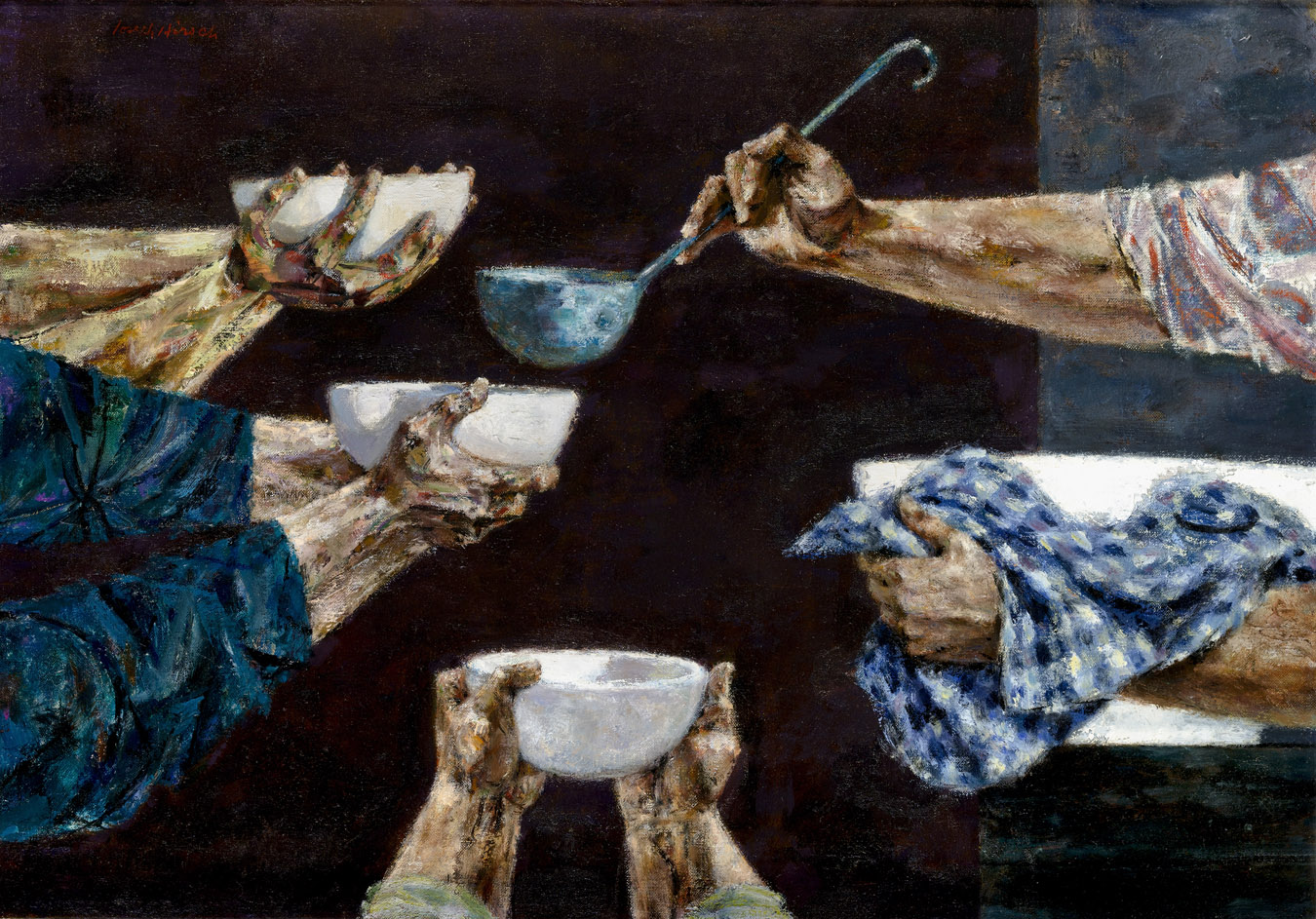Joseph Hirsch
By the age of twenty-three, Joseph Hirsch was awarded the prestigious Walter Lippincott Award at the Pennsylvania Academy of Fine Arts for the “best figure painting in oil by an American citizen.” It wasn’t just the academics who recognized Hirsch’s technical virtuosity and exceptional eye—at the 1939 World’s Fair in New York, the public voted Hirsch’s painting, Two Men , the most popular in show. The work was subsequently acquired by the Museum of Modern Art in New York.
A Social Realist painter, Hirsch’s pictures of the “everyman” were a tribute to the fight these men waged—whether at home trying to make a living or on the frontline abroad serving their country during World War II. Hirsch treated his subjects with consummate respect and great humanity.
Born in Philadelphia, Hirsch received his initial artistic training at the Pennsylvania Museum and School of Industrial Design (later the Philadelphia Museum of Art) before moving to New York in 1932, where he enrolled in the Art Students League. He gained national attention as a muralist for the Federal Works Progress Administration, completing three large murals at the Benjamin High School (1938), the Amalgamated Clothing Workers Building (1939), and the Municipal Court Building (1940) in Philadelphia. In 1942, Hirsch had sixteen paintings in the Museum of Modern Art’s exhibition, Americans 1942.
Hirsch was an artist who had a broad spectrum of interests—and occasionally he would be hired to illustrate for the theatre. In1949, his drawing for Arthur Miller’s Death of a Salesman—of a hunched, faceless, Willy Lowman, carrying his suitcases—became a signature poster for the play. Hirsch’s depiction of a deflated man resonated in theatres around the world.
Hirsch excelled at using color to enhance the mood of a picture. His dark, almost grim palette employed in Soup underscores the reality of the lives he’s portraying. Hirsch’s pictorial strategy: to feature only the outstretched arms of the men in need creates apowerful portrait. Hirsch’s exaggerated delineation of their taut, muscled arms, with sleeves rolled-up, signals to the viewer that these men have done their share of heavy lifting—they are workers. The similar treatment of the arm of the figure ladling the soup, a fellow worker, unifies the picture visually and thematically. Hirsch’s handling of the white bowls against an uncluttered, dark background renders them as objects of beauty—lendingdignity to the men’s situation. These workers are not asking for a handout, but rather, a helping hand.
Joseph Hirsch
Soup, 1957
Oil on canvas
18 x 26 inches
Signed upper left
Provenance
ACA Gallery, New York
Collection of Rita and Daniel Fraad, New York, acquired from the above in 1957
Sold Sotheby’s New York, December 1, 2004, lot 67
Private Collection, Michigan, acquired from the above
Private Collection, Washington DC, acquired from the above in 2012

